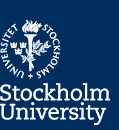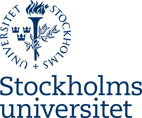We study the organization and regulation of the actin microfilament system – a force generating machinery of proteins in eukaryotic cells. It enables cells to connect to each other, remodel tissue and organs and migrate to new locations during development and wound healing for instance. Actin is the principal component of this biomotor, which also impacts on cyto-architecture, intracellular transport and functions in the nucleus.
Over the years we have contributed to the understanding of how cells control actin remodeling in response to receptor signaling and how this impacts on cell migration. Our studies are focused on profilin, which play a central role in practically all processes involving actin polymerization. Hence, profilin is intimately linked to the formation and elongation of actin filaments during protrusion-formation and edge-advancement of migrating cells, along with proteins such as VASP and formins.
Lately, we have discovered that profilin also is connected with the microtubule system. Not only is the array of microtubule polymers that extends from the centrosome close to the nucleus towards the cell periphery associated with profilin, but profilin is also influencing the stability and elongation rate of these polymers. It is well-known that the microtubule system is important for the directionality by which migrating cells move and therefore operates in a coordinated fashion with the microfilament system. Our recent observations therefore suggest that profilin contributes to the molecular mechanisms that synchronize the activities of the microtubule and microfilament systems and we no search to address the details of this by a variety of cell biology techniques, including CRISPR/Cas9-genome modulation and advanced imaging. In a larger perspective our work aims for an understanding of how actin and microtubule dependent mechanisms like growth, intracellular trafficking and directional migration are coordinated to reflect cellular behavior under normal and pathological conditions.
Keywords
Actin, profilin, cell motility, cell signalling
Selected publications
Nejedlá, M., Klebanovych, A., Sulimenko V., Sulimenko, T., Dráberová, E., Dráber, P, Karlsson, R. (2020) Profilin 1 associates with the mammalian centrosome Life Science Alliance Nov 2020, 4 (1) e202000655; DOI: 10.26508/lsa.202000655
Steinz, M.M., Persson, M., Aresh, B., Olsson, K., Cheng, A.J., Ahlstrand, E., Lilja, M., Lundberg, T.R., Rullman, E., Ängeby Möller, K., Sandor, K., Ajeganova, S., Yamada, T., Beard, N., Karlsson, B.C., Tavi, P., Kenne, E., Svwensson, C.I., Rassier, D.E., Karlsson, R., Friedman, R., Gustafsson, T., Lanner, J.T. (2019) Oxidative hotspots on actin promote skeletal muscle weakness in rheumatoid arthritis. JCI Insight 2019 Mar 28;5. pii: 126347. doi: 10.1172/jci.insight.126347.
Nejedla M., Li, Z., Masser, A.E., Biancospino, M., Spiess, M., Mackowiak, S.D., Friedländer, M.R., and Karlsson, R. (2017) A Fluorophore Fusion Construct of Human Profilin I with Non-Compromised Poly(LProline)Binding Capacity Suitable for Imaging, J. Mol. Biol.
Nejedla, M., Sara, S., Sulimenko, V., de Almeida, FN., Blom, H., Draber, P., Aspenström, P., Karlsson, R. (2016) Profilin connects Actin Assembly with Mictrotubule dynamics. Mol Biol Cell. pii: mbc.E15-11-0799.
Grantham, J., Lassing, I., & Karlsson, R. (2012). Controlling the cortical actin motor.
Protoplasma. 249(4):1001-15
Johnsson, A.K., & Karlsson, R. (2012). Synaptotagmin 1 causes phosphatidyl inositol lipid-dependent actin remodeling in cultured non-neuronal and neuronal cells. Exp Cell Res. 318(2):114-26
Lindberg, U., Karlsson, R., Lassing, I., Schutt, C.E., & Höglund, A.S. (2008). The microfilament system and malignancy. Semin Cancer Biol. 18(1):2-11




